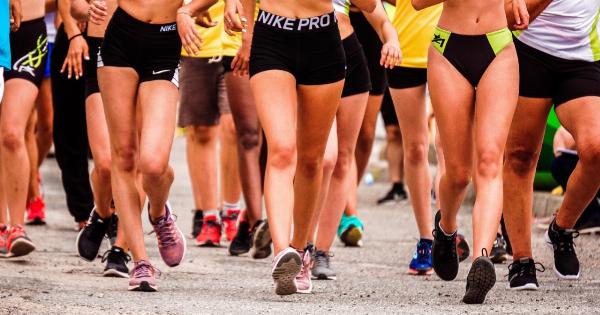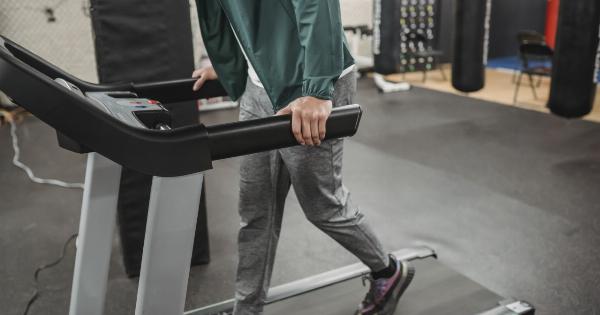Walking is an excellent form of exercise that provides numerous health benefits. Not only is it accessible to people of all ages and fitness levels, but it is also easy to incorporate into a daily routine.
Whether you are walking for leisure or specifically for fitness purposes, understanding the optimal speed guidelines can help you maximize the benefits of this enjoyable activity.
The Importance of Walking Speed
The speed at which you walk plays a crucial role in determining the intensity of your workout and the benefits you can derive from it.
Walking too slowly may result in minimal cardiovascular improvements, while walking too quickly without caution can lead to injuries or burnout. Therefore, finding the optimal walking speed that suits your fitness goals is essential.
Determining Your Target Heart Rate
One way to find the optimal walking speed is by determining your target heart rate (THR). To get an approximate THR, subtract your age from 220. This will give you the upper limit of your THR.
For moderate-intensity walking, aim to achieve 50-70% of your THR, whereas for vigorous-intensity walking, aim for 70-85% of your THR.
Calculating Your Walking Speed
Measuring your walking speed can help you determine if you are within the recommended range. To calculate your walking speed, you will need to know the distance you have covered and the time it took you to complete it. The formula is:.
Walking Speed = Distance / Time.
For example, if you walked 3 miles in 45 minutes, your walking speed would be:.
Walking Speed = 3 miles / 45 minutes = 0.067 miles per minute.
Optimal Walking Speed Guidelines
The optimal speed for walking varies depending on your fitness goals and current level of fitness. Below are some general guidelines to help you determine the appropriate speed for your walking routine:.
1. Low-Intensity Walking:
If you are new to exercise or have certain health conditions, walking at a low intensity is a great place to start. This speed allows you to build endurance, improve joint mobility, and burn calories without putting excessive strain on your body.
Aim for a speed of 3-4 kilometers per hour (1.9-2.5 miles per hour) for low-intensity walking.
2. Moderate-Intensity Walking:
For general fitness and health improvements, moderate-intensity walking is recommended. This level of intensity elevates your heart rate, provides cardiovascular benefits, and helps with weight management.
Aim to walk at a speed of 5-6 kilometers per hour (3.1-3.7 miles per hour) to achieve moderate-intensity walking.
3. Brisk Walking:
Brisk walking is a step above moderate-intensity walking and offers additional health benefits. This speed allows you to challenge yourself and improve your aerobic fitness.
Aim for a speed of 6.5-7.5 kilometers per hour (4-4.7 miles per hour) to experience the benefits of brisk walking.
4. Power Walking:
If you are looking to burn more calories and increase your walking speed, power walking is an excellent choice. This form of walking incorporates larger arm movements, a longer stride, and a faster pace.
Aim for a speed of 7.5-9 kilometers per hour (4.7-5.6 miles per hour) for an effective power walking workout.
5. Racewalking:
Racewalking is a competitive form of walking that pushes the limits of speed and endurance. This technique requires specific movements and adherence to certain rules.
Racewalking can be performed at speeds greater than 9 kilometers per hour (5.6 miles per hour).
Considerations for Optimal Walking Speed
While the guidelines mentioned above provide a general idea of optimal walking speeds, it is crucial to consider individual variations, such as fitness level, health conditions, and personal goals.
Always listen to your body and gradually increase your walking speed to avoid overexertion or injuries.
Additionally, proper warm-up exercises, stretching, and cool-down routines should be incorporated into your walking routine to prevent muscle soreness and injuries.
Pay attention to your posture and use proper walking techniques to maximize the benefits of each session.
Benefits of Walking at Optimal Speed
Walking at the optimal speed for your fitness goals helps you reap several benefits. Some of the advantages of walking at the appropriate speed include:.
– Improved cardiovascular fitness.
– Weight management and calorie burning.
– Increased muscle strength and endurance.
– Enhanced joint mobility and flexibility.
– Reduced risk of chronic diseases.
– Mood elevation and stress reduction.
Tips for Sustaining Your Walking Routine
To make walking a regular part of your fitness routine, here are some tips to keep in mind:.
– Set realistic goals: Start with shorter distances and slower speeds, gradually increasing them as your fitness improves.
– Find an enjoyable route: Walk in places that you find pleasant, such as parks, trails, or neighborhoods with appealing scenery.
– Mix it up: Vary your walking speed, distance, and routes to keep your routine interesting and challenging.
– Walk with a friend: Walking with a partner or joining a walking group can enhance motivation and make the experience more enjoyable.
– Keep track of your progress: Use a fitness tracker or app to monitor your walking distance, speed, and achievements.
Conclusion
Walking at an optimal speed is essential for achieving your desired fitness outcomes. By following the guidelines mentioned above and considering individual factors, you can tailor your walking routine to meet your specific needs and goals.
Remember to start slowly, listen to your body, and gradually increase your walking speed over time. Walking is a low-impact exercise that can provide immense benefits to your overall health and well-being.



























